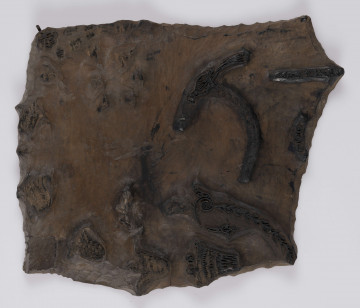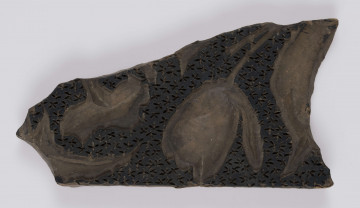
Block for printing on textile
1901 — 1950
National Museum in Lublin
Part of the collection: Fabric printing matrices
Textile printing is a long-known technique of decorating fabrics. It came to Europe from the East. Fabric printing shops operated in many cities and larger towns across the entire Old Continent, but the textiles were also decorated by the local travelling craftsmen. Primary tools used by a textile printer were special stamps made of wood and covered with an ornament. Initially, the designs were rather simple, but gradually they took more and more intricate forms. The ornaments found on the printing blocks varied in subject matter: in addition to the most popular geometric and floral patterns and their combinations, there were also anthropomorphic, zoomorphic and architectural motifs. Sometimes, the purpose of a pattern was to imitate a specific type of fabric, e.g., a tartan or striped linen used to make women’s skirts. An example of such stamp is the one found in the ethnographic collection of the National Museum in Szczecin. It has a convex, geometric ornament consisting of three stripes of sharply pointed zigzags in the shape of the letter V. According to Roman Renfuss, author Polskie druki ludowe na płótnie, this design was meant to imitate the border decorations of silk scarves with a “shimmering multicoloured pattern, constructed in the same way”.
Author / creator
Dimensions
cały obiekt: height: 6,2 cm, width: 20 cm
Object type
matrix
Creation time / dating
Creation / finding place
Identification number
Location / status

1901 — 1950
National Museum in Lublin

1901 — 1950
National Museum in Lublin

1901 — 1950
National Museum in Lublin
DISCOVER this TOPIC
Museum of King Jan III's Palace at Wilanów
DISCOVER this PATH
Educational path